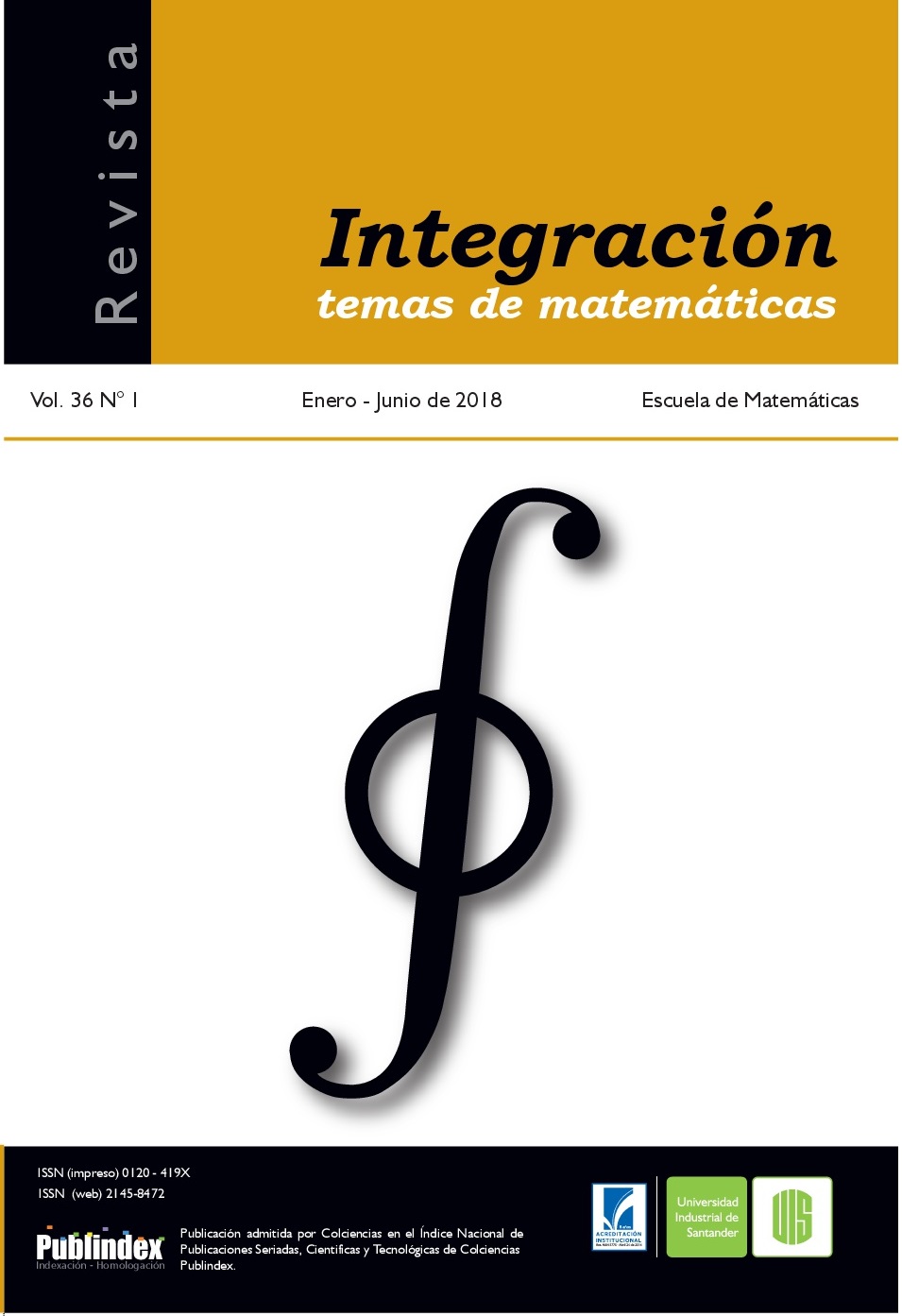Published 2018-07-18
Keywords
- Backward bifurcation,
- forward bifurcation,
- treatment,
- SIR model
How to Cite
Abstract
Understanding why there are multiple equilibrium points when R0 < 1 has been one of the main motivations to analyze existence of a backward bifurcation in epidemiological models. Existence of multiple endemic
states is usually associated to branches of equilibrium points of the models, which could arise from either the disease-free equilibrium point if R0 = 1 or from an endemic equilibrium point if R0 > 1. In this work, an SIR model with a density-dependent treatment rate is analyzed. The nature of the point where backward bifurcation emerges is explained in function of the velocity of the per-capita treatment rate. Strategies for the control or eradication of the disease will be proposed in function of the efficiency of the treatment.
Downloads
References
[2] Brauer F., “Backward bifurcations in simple vaccination models”, J. Math. Anal. Appl. 298 (2004), No. 2, 418–431.
[3] Ghosh M., Li X. and Li W., “Stability and bifurcation of an epidemic model with nonlinear incidence and treatment”, Appl. Math. Comput. 210 (2009), No. 1, 141–150.
[4] Gumel A.B., Elbasha E.H., Watmough J., Sharom O. and Podder C.N., “Role of incidence function in vaccine-induced backward bifurcation in some HIV models”, Math. Biosci. 210 (2007), No. 2, 436–463.
[5] Gumel A.B. and Sharomi O., “Re-infection-induced backward bifurcation in the transmission dynamics of chlamydia trachomatis”, J. Math. Anal. Appl. 356 (2009), No. 1, 96–118.
[6] Hethcote H., “The mathematics of infectious diseases”, SIAM Rev. 42 (2000), No. 4, 599–653.
[7] Lacitignola D. and Buonomo B., “On the backward bifurcation of a vaccination model with nonlinear incidence”, Nonlinear Anal. Model. Control 16 (2011), No. 1, 30–46.
[8] Liu X. and Zhang X., “Backward bifurcation of an epidemic model with saturated treatment function”, J. Math. Anal. Appl. 348 (2008), No. 1, 433–443.
[9] Lou J., Song B. and and Du W., “Different types of backward bifurcation due to densitydependent treatments”, Math. Biosci. Eng. 10 (2013), No. 5-6, 1651–1668.
[10] Moghadas S.M. and Alexander M.E., “Bifurcation analysis of an sirs epidemic model with generalized incidence”, SIAM J. Appl. Math. 65 (2005), No. 5, 1794–1816.
[11] Perelson A.S., Reluga T.C. and Medlock J., “Backward bifurcations and multiple equilibria in epidemic models with structured immunity”, J. Theor. Biol. 252 (2008), No. 1, 155–165.
[12] Song B. and Castillo-Chávez C., “Dynamical models of tuberculosis and their applications”, Math. Biosci. Eng. 1 (2004), No. 2, 361–404.
[13] Sun Z. and Liu Y., “Backward bifurcation in an hiv model with two target cells”, in Proceedings of the 29th Chinese Control Conference, Beijing, China, 1397–1400, July, 2010.
[14] Van den Driessche P., Arino J. and McCluskey C.C., “Global results for an epidemic model with vaccination that exhibits backward bifurcation”, SIAM J. Appl. Math. 64 (2003), No. 1, 260–276.
[15] Van den Driessche P. and Hadeler K.P., “Backward bifurcation in epidemic control”, Math. Biosci. 146 (1997), No. 1, 15–35.
[16] Velasco-Hernandez J.X. and Kribs-Zaleta C.M., “A simple vaccination model with multiple endemic states”, Math. Biosci. 164 (2000), No. 2, 183–201.
[17] Wan H., Cui J. and Mu X., “Saturation recovery leads to multiple endemic equilibria and backward bifurcation”, J. Theor. Biol. 254 (2008), No. 2, 275–283.
[18] Wang W., “Backward bifurcation of an epidemic model with treatment”, Math. Biosci. 201 (2006), No. 1-2, 58–71.
[19] Wang H., Hu Z. and Liu S., “Backward bifurcation of an epidemic model with standard
incidence rate and treatment rate”, Nonlinear Anal. 9 (2008), No. 5, 2302–2312.
[20] Watmough J. and Van den Driessche P., “A simple sis epidemic model with a backward
bifurcation”, J. Math. Biol. 40 (2000), No. 6, 525–540.
[21] Zheng B., Takeuchi Y., Wang J. and Liu S., “Qualitative and bifurcation analysis using an
sir model with a saturated treatment function”, Mathematical and Computer Modelling 55
(2012), No. 3, 710–720.
